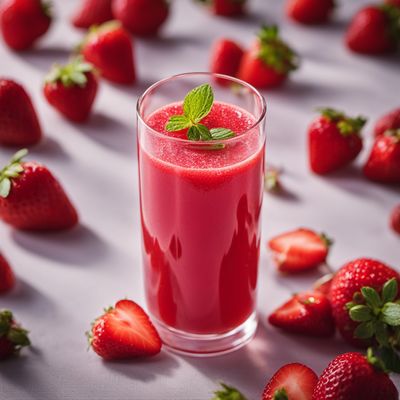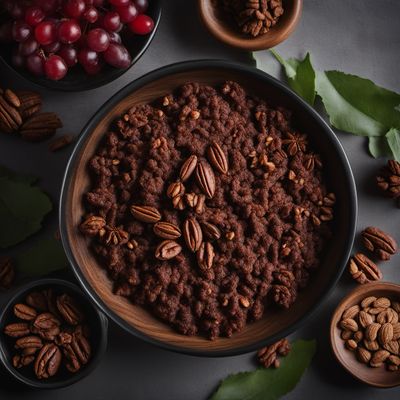
Ingredient
Juice concentrate, grape
The Essence of Grape: Concentrated Delight
Juice concentrate, grape is a thick, syrupy liquid made by removing water from freshly squeezed grape juice. It is known for its intense grape flavor and vibrant color. The concentrate has a smooth and velvety texture, making it easy to incorporate into various recipes. It is commonly used as a sweetener, flavor enhancer, or natural coloring agent in beverages, desserts, sauces, and marinades. The concentrated form of grape juice allows for a longer shelf life and convenient storage.
Origins and history
Grapes have been cultivated for thousands of years, with evidence of their consumption dating back to ancient civilizations such as the Egyptians and Greeks. The process of making grape juice concentrate involves extracting the juice from ripe grapes and then evaporating the water content to create a concentrated form. This technique has been used for centuries to preserve the flavor and sweetness of grapes, allowing people to enjoy their taste even when fresh grapes are not in season.
Nutritional information
Juice concentrate, grape is a concentrated source of natural sugars, providing a burst of energy. It is also a good source of vitamin C and antioxidants, which help support a healthy immune system and protect against oxidative damage.
Allergens
Juice concentrate, grape does not typically contain any known allergens. However, individuals with grape allergies should exercise caution and consult with a healthcare professional.
How to select
When selecting grape juice concentrate, look for a product that is made from high-quality grapes and does not contain any added sugars or artificial additives. Check the label for the origin of the grapes and opt for organic or locally sourced options whenever possible.
Storage recommendations
To maintain the freshness and quality of grape juice concentrate, it should be stored in a cool, dark place away from direct sunlight. Once opened, it is best to transfer the concentrate to an airtight container and refrigerate it to prolong its shelf life.
How to produce
While producing grape juice concentrate at home can be a complex process, amateur enthusiasts can start by juicing fresh grapes and then simmering the juice on low heat to reduce the water content. The resulting liquid can be further concentrated by gently simmering until desired thickness is achieved.
Preparation tips
To use grape juice concentrate, simply dilute it with water according to the desired sweetness level. It can be added to smoothies, cocktails, or homemade sodas for a burst of grape flavor. In baking, it can be used as a substitute for sugar or as a natural coloring agent in frostings, glazes, or fruit fillings. Additionally, it can be used as a marinade for meats or as a base for fruity sauces and dressings.
Culinary uses
Grape juice concentrate is commonly used in the production of grape juice, grape jelly, grape-flavored beverages, grape sorbet, grape-infused desserts, and grape-based sauces for savory dishes.
Availability
Grape juice concentrate is commonly available in regions where grapes are cultivated, such as the United States, Italy, France, Spain, and Chile.
More ingredients from this category » Browse all

Juice concentrate, sweet cherry
The Intense Essence of Sweet Cherries

Juice concentrate, cranberry
"The Tangy Elixir: Unveiling the Power of Cranberry Juice Concentrate"

Juice concentrate, mandarin
The Tangy Essence of Mandarin

Juice concentrate, pineapple
"Tropical Gold: Unleashing the Vibrant Essence of Pineapple in Juice Concentrate"

Juice concentrate, orange
The Essence of Sunshine: Orange Juice Concentrate

Juice concentrate, blueberry
The Essence of Blueberry Concentrate

Juice concentrate, apple
The Essence of Orchard Bliss

Juice concentrate, apricots
The Golden Essence: Exploring Apricot Juice Concentrate

Juice concentrate, black currant
The Essence of Black Currant

Juice concentrate, peach
"The Essence of Sun-Ripened Peaches: Peach Juice Concentrate"

Juice concentrate, strawberry
Sweet Symphony: Unveiling the Essence of Strawberry Juice Concentrate

Juice concentrate, red currant
The Tangy Elixir: Unveiling the Essence of Red Currant Juice Concentrate
